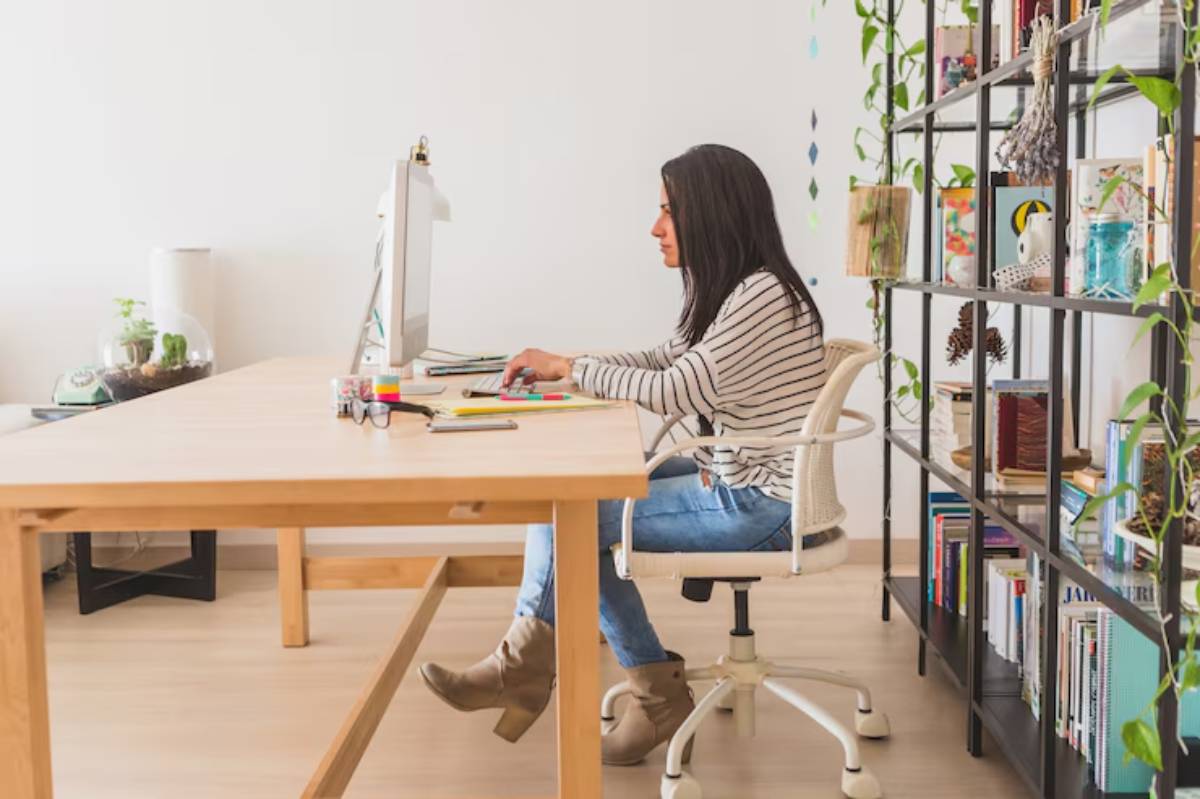The Health Blog

Setting Up an Ergonomic Home Workspace
Let’s be honest — when many of us first started working remotely, we thought it would be temporary. A few weeks of perching at the kitchen table or working from bed didn’t seem like a big deal. But now? Remote work is here to stay for countless professionals. And unfortunately, so are the aches, eye strain, and posture problems caused by makeshift home setups.
If you’ve noticed sore shoulders, a stiff neck, or nagging lower back pain after a long workday, your workspace might be the culprit.
This article is your guide to creating an ergonomic home office that supports both your health and your productivity. We’ll walk through the science of ergonomics, break down the must-have components of a comfortable setup, and share simple ways to optimise your environment — even if you’re working with limited space or budget.
Why ergonomic design matters more than ever

Comfort isn’t a luxury — it’s a long-term investment
The word “ergonomic” gets thrown around a lot, but at its core, it’s about one thing: designing your workspace to fit you, not the other way around.
When you spend hours hunched over a laptop or twisting in a dining chair, your body compensates.
Over time, these small misalignments can lead to:
- Muscle strain and chronic pain
- Repetitive strain injuries (RSIs)
- Tension headaches and eye fatigue
- Reduced concentration and energy
The UK’s Health and Safety Executive (HSE) notes that musculoskeletal disorders are among the most common work-related issues, and many can be prevented with better setups. A good remote work setup doesn’t just help you feel better now; it protects your long-term well-being.
Signs your current setup isn’t working
Your body will tell you — if you’re listening
You might not realise your discomfort is workspace-related until the symptoms become persistent.
Some red flags to watch out for:
- Neck and shoulder tightness after working at your laptop for long periods
- Numbness or tingling in your wrists, hands, or fingers
- Frequent squinting, dry eyes, or blurry vision
- Lower back stiffness or discomfort, especially after sitting
- Headaches that start mid-to-late day
If you’re dealing with any of the above, your posture and positioning likely need adjusting — and fast.
Ergonomic essentials: What your workspace really needs
Start with the basics — and build from there
You don’t need to overhaul your entire room to improve comfort.
Focus on the core components first:
1. Chair: Your chair should support the natural curve of your spine.
Look for:
- Adjustable height and backrest
- Lumbar support (a cushion or rolled towel can help)
- Armrests that allow your elbows to rest at 90 degrees
2. Desk height: Your desk or table should let your forearms rest flat, with your shoulders relaxed and wrists straight. If your desk is too high, consider a footrest.
3. Monitor position: Your screen should be:
- Directly in front of you
- About an arm’s length away
- Top of the screen at or slightly below eye level
4. Keyboard and mouse: Position these so your wrists stay straight and your hands hover just above the desk. Consider ergonomic options designed to reduce strain.
5. Lighting: Natural light is ideal, but if that’s not possible, use a soft desk lamp that reduces glare. Don’t work in dim or overly bright conditions.
6. Foot positioning: Your feet should rest flat on the floor or on a footrest. Avoid dangling or crossing legs for long periods.
For more detailed examples of how workspace comfort impacts overall wellbeing, take a look at the connection between physical and mental health in remote work — your posture plays a bigger role than you think.
Small space? No problem
You don’t need a dedicated office to be ergonomic
Not everyone has the luxury of a separate home office — and that’s okay. You can still optimise a corner of your kitchen, bedroom, or living room with smart tweaks.
Try this:
- Use a laptop riser (or a stack of books) to raise your screen to eye level
- Pair with an external keyboard and mouse for better wrist positioning
- Repurpose furniture like adjustable-height stools or dining chairs with cushions for lumbar support
- Create a portable kit with your accessories so you can pack and unpack your ergonomic setup quickly
Ergonomics is about fit, not square footage.
The role of movement in ergonomic health
Your best posture is your next posture
Even the perfect setup can’t fix everything if you sit in one position all day. The body was built to move — and frequent, varied motion is key to staying comfortable.
Incorporate micro-movements and posture resets by:
- Standing up every 30–60 minutes
- Stretching your wrists, shoulders, and spine regularly
- Walking around during phone calls or meetings
- Using a sit-stand desk or working at a counter for variety
Try setting a timer or using a break reminder app to prompt regular movement. And if you find you often power through tasks without breaks, establishing a consistent remote work routine can help you schedule these pauses more mindfully.
Ergonomics and mental clarity

Physical alignment supports mental focus
When your body is comfortable, your mind is more focused. Discomfort acts like background noise, draining your attention and reducing the quality of your work.
An ergonomic home workspace can increase:
- Mental alertness
- Creative flow
- Decision-making ability
- Stress reduction
In short, you’ll not only work better, you’ll feel better doing it. And the more ease you build into your environment, the more energy you’ll have for tasks that truly matter.
Mistakes to avoid when setting up your workspace
Common missteps and how to fix them
Even with the best intentions, it’s easy to make ergonomic misjudgements.
Watch out for:
- Working from your bed or sofa for long periods it encourages poor spinal alignment
- Ignoring screen glare, especially from windows or overhead lights
- Hunching over your laptop, which compresses your spine and neck
- Positioning your monitor off-centre, which leads to constant neck twisting
- Perching on hard, unsupportive chairs — a recipe for back strain
If you’ve been doing any of these, no need to panic — just start with one adjustment at a time and build from there.
Investing in comfort: What’s worth the spend?
When to splurge and when to save
You don’t need to break the bank to set up a great space. But some items are worth investing in:
Worth the investment:
- A supportive chair with adjustable features
- An external monitor or riser
- A high-quality desk lamp with adjustable brightness
- An ergonomic keyboard and mouse
Easy saves:
- Use household items as risers or supports
- Repurpose cushions for lumbar support
- Opt for budget-friendly ergonomic accessories from trusted brands
- DIY a standing desk by using a stack of boxes or a kitchen counter
Think of your ergonomic upgrades as a health investment, not a luxury.
Conclusion: Design your space to support your body and your brain
An ergonomic home office isn’t about perfection — it’s about creating a space that supports how you work, move, and think. You deserve to finish your workday without aches and tension. You deserve to sit (or stand) in a way that helps you thrive, not just survive.
So whether you’re starting from scratch or fine-tuning your current setup, take action today. Elevate your screen. Adjust your chair. Add that back cushion. You’ll be surprised how much better your mind works when your body feels supported.
Your home office should work for you, not against you. Make it ergonomic, make it yours, and most importantly, make it sustainable.









